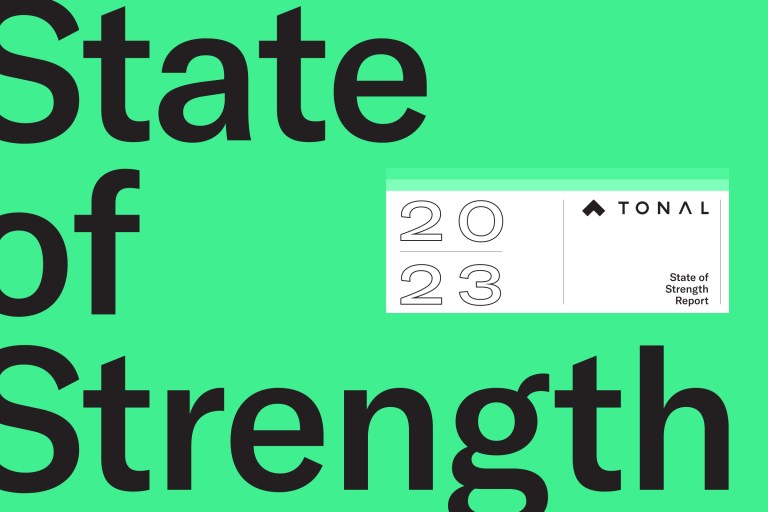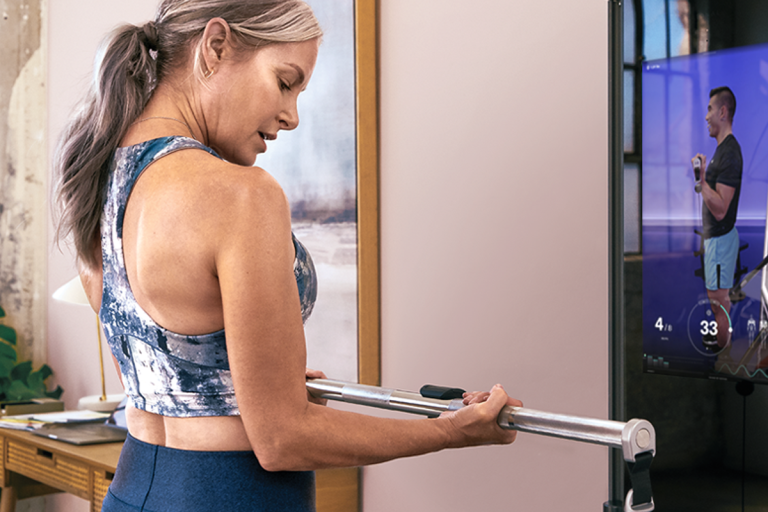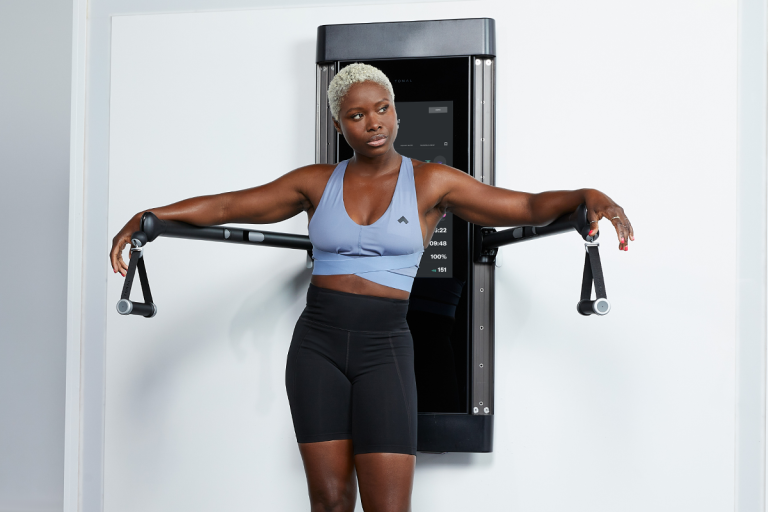Stronger With Age: 5 Strength Training Lessons for Older Athletes
The 2023 State of Strength report finds that you can enjoy the benefits of resistance training at any age.

Strength training isn’t just for the young. Data from Tonal’s State of Strength report shows that adults in their 50s and older have been lifting heavy and reaping big rewards. And for good reason: Recent research suggests that strength training over 50 is integral to healthy aging as it builds muscle, promotes joint health, helps preserve bone mineral density, and is linked to a reduced likelihood of cardiovascular disease and certain cancers.
Tonal’s State of Strength report draws on statistics from one year of members’ strength training activities. That includes more than 66 billion pounds lifted in 10-million-plus workouts. Among the more than 175,000 unique members included in the report, 20 percent were over the age of 50.
Older Tonal members are also concentrating on functional movements that translate to better performance in activities like golf and pickleball, as well as daily activities like carrying a heavy suitcase. Training is about building and maintaining a body that lets you do all the things you want to do, and feel good doing it, says Kristina Centenari, former competitive tennis player and Tonal Coach.
Here are five takeaways from Tonal members’ data on how you can optimize your strength training over 50:
1. Start Where You Are—Even If You’re Over 50
Never lifted before? Out of the game for a while? No sweat. You can still enjoy the benefits of strength training at any age and any experience level. In fact, Tonal members were more likely to identify as beginners as they age, proving it’s never too late to get started.
Research shows that beginning a resistance training regimen at any age can help build strength. A 2021 meta-analysis of studies that included over 500 adults ages 65 to 82, demonstrated that resistance training improved muscular strength and performance. Lifting has even been shown to significantly increase strength in adults over 80, according to a 2020 meta-analysis.

2. Use It Or Lose It
Age-related muscle loss, or sarcopenia, can start as early as age 30, and the rate of loss accelerates after age 60. Although some muscle loss is inevitable, according to Stuart Phillips, PhD, a professor of kinesiology and director of the Physical Activity Centre of Excellence at McMaster University, a sedentary lifestyle is one of the biggest contributors to muscle loss with age. “The old idiom of ‘use it or lose it’ really applies,” he says.
Older Tonal members are living proof as they’re continuing to make strength gains in their later decades. In their first year on Tonal, members 55 and older were, on average, 73 percent stronger than when they started, as measured by an increase in Strength Score.
Tonal members 55 and older were also 12 percent more consistent with their workouts than younger cohorts. They averaged between two and three workouts per week, which is in line with CDC recommendations for strength training. Simply putting in the work on a regular basis can make a big difference in terms of gaining strength and improving fitness. “Consistency wins the game,” says Phillips. “The message is all around adherence. Keep doing it and keep coming back to it.”
3. Power Up At Any Age
Training for power, or the ability to overcome resistance quickly, improves performance in older adults. Research shows that power training helps maintain fast-twitch muscle fibers that generally tend to slow with age.
“The ability to do everyday tasks tends to be about the application of force over a relatively short period of time—and that’s power,” says Troy Taylor Senior Director of Performance at Tonal, who explains that activities such as getting up out of a chair or crossing the street before the light changes, are reliant on the ability to generate power.
Tonal members over 55 averaged a 25 percent increase in peak power in their deadlifts over the course of a year, showing that strength training can lead to impactful gains in this vital skill.
4. Train for Life
Older members were more likely to choose improving fitness as their primary goal, instead of building muscle or getting lean. And while strength training over 50 can certainly help you gain muscle mass and burn fat, adults 55+ are taking a more holistic approach to fitness, picking up the weights to live longer and healthier lives, improve health metrics, and keep up with grandkids.
“As a doctor, I know being strong is very important for us as we get older, especially for injury prevention,” says Tonal member Joe Wetterhahn, who encourages his older patients to try resistance training to improve their quality of life. “That makes the difference between falling on ice and breaking your hip, and slipping on ice but having the muscular strength to catch yourself.”
In a survey of Tonal members, respondents over 50 ranked living a longer and healthier life as their number one reason to work out (with 37 percent selecting that option), followed by improving overall fitness (24 percent), and gaining muscle (17 percent).
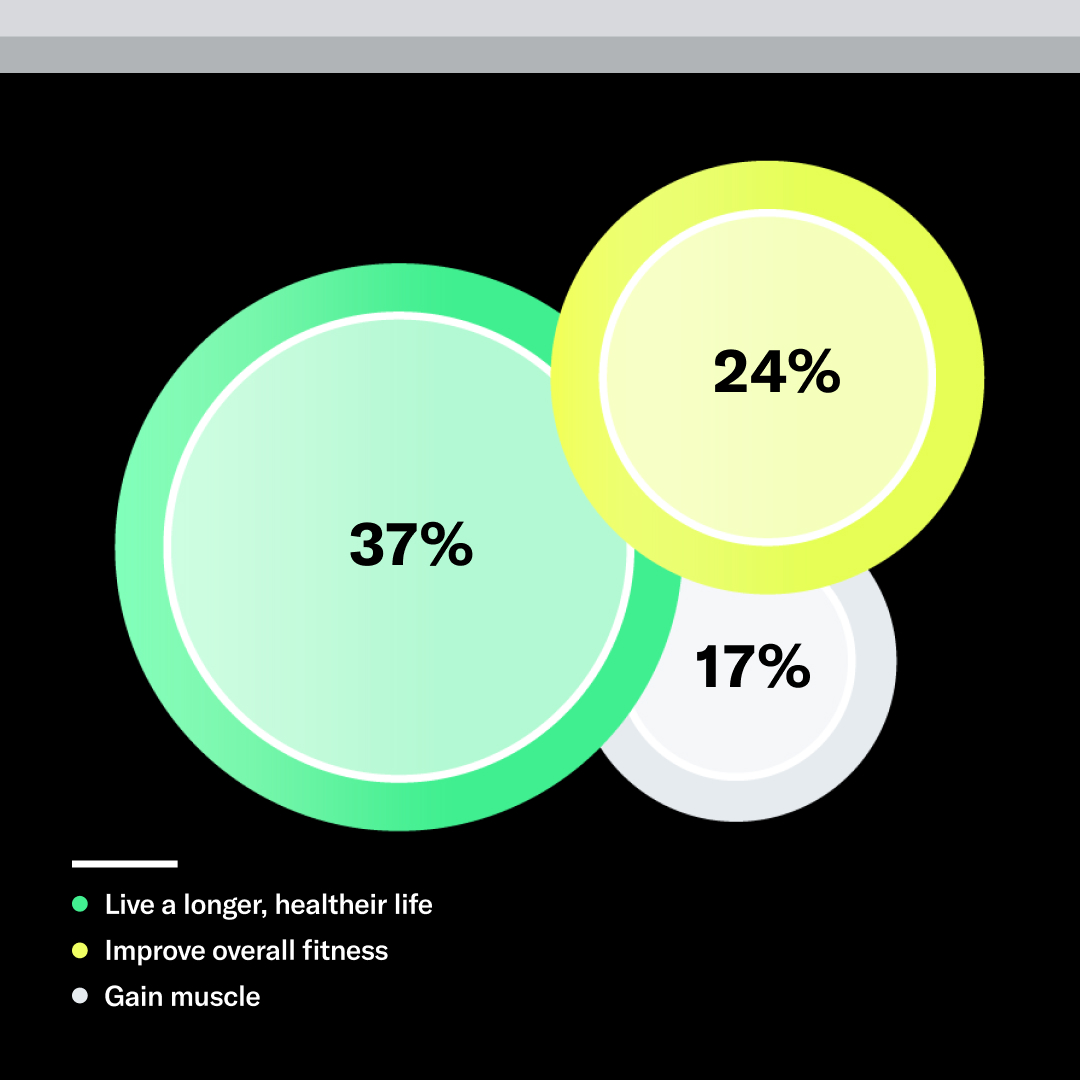
5. Build Functional Muscle Over 50
Older adults know that strength training is about more than just developing “mirror muscles.” They focused on functional exercises, core stability, and mobility.
Tracy Dingman, a 65-year-old Tonal member, knows the importance of building balance, agility, and endurance through strength training. Even though she didn’t start lifting weights until she was in her 50s, Dingman says her gains have helped her achieve many of her athletic goals, including hiking Everest Base Camp.
Similarly, Tonal member Jeffrey Levy has seen major improvements in his golf game after working on his rotational power on Tonal. “I may not be getting any younger, but I can keep getting stronger,” he says.
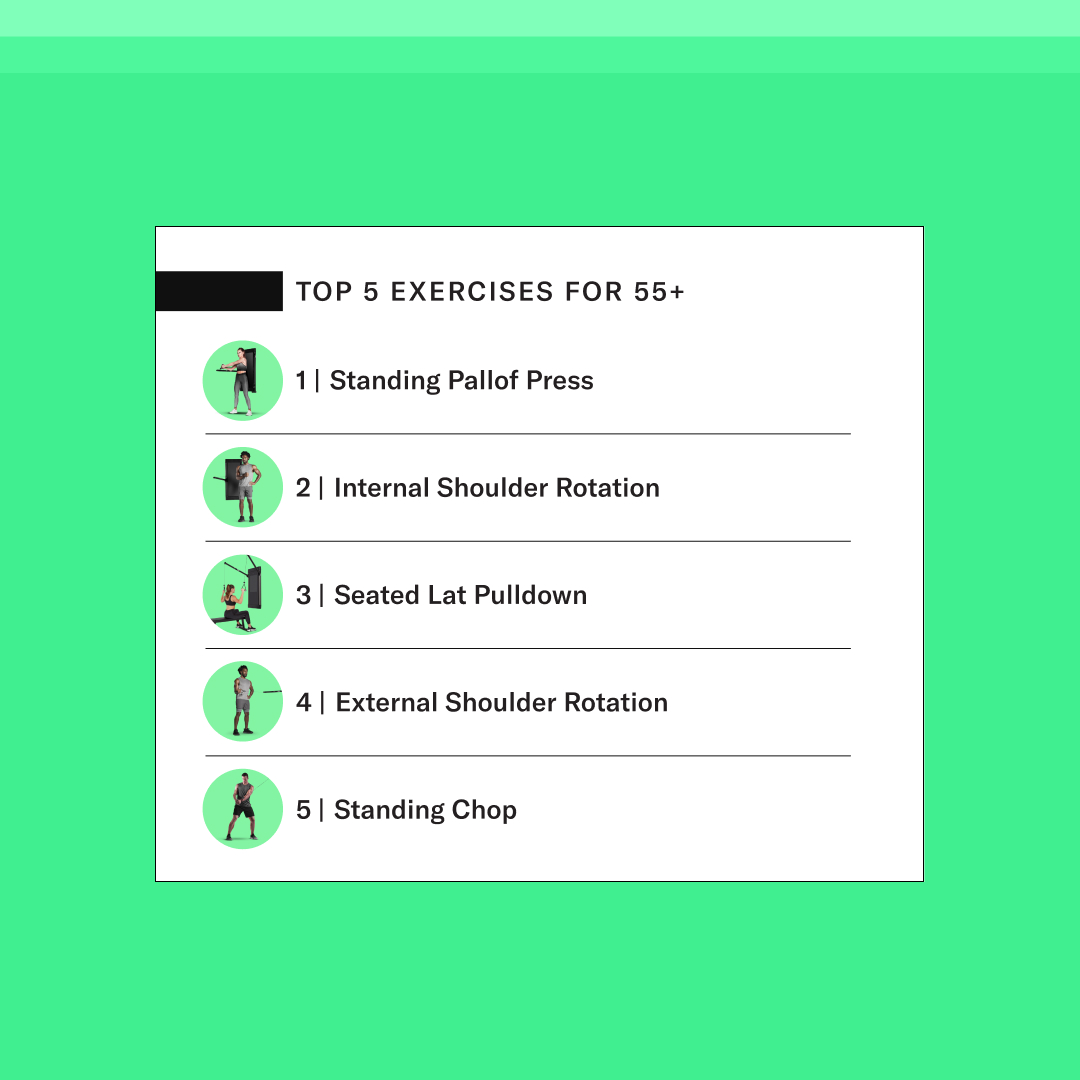
The Bottom Line
Even if you’ve never lifted before, strength training over 50 is essential for helping you feel your best. By training smarter, not harder, with functional exercises and a holistic approach, you’ll perform better in everyday activities and improve your health.
After adding strength training to her routine in her 50s, Tonal member Mary-Elise Smith says, “I’m 56 now, and my joints don’t hurt as much; my posture is better; and I have so much more energy.”
